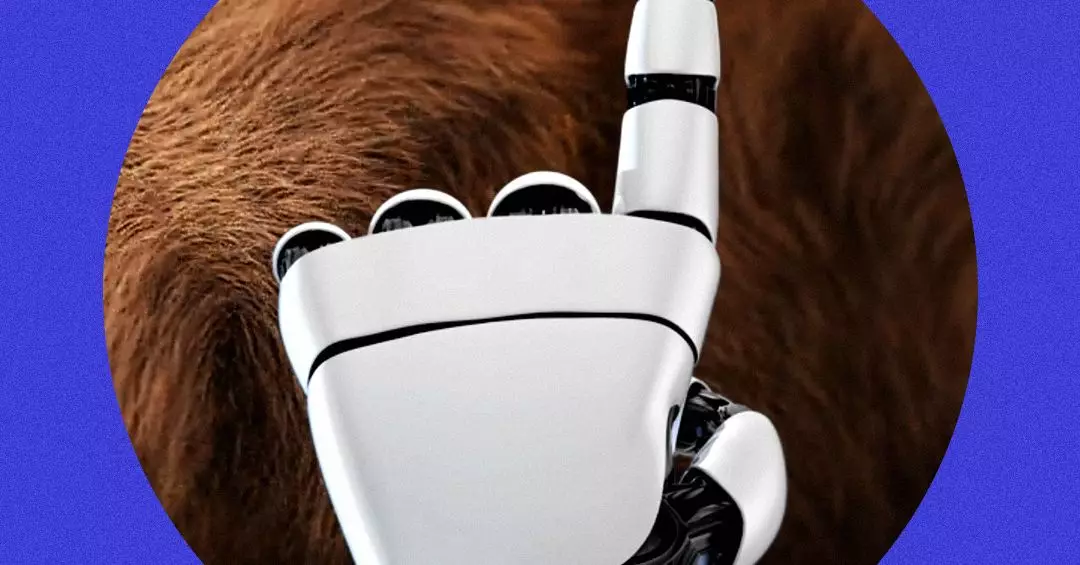Amazon has officially introduced a groundbreaking innovation in the realm of robotics: the Vulcan robot. This remarkable machine represents a significant advancement in how robots handle tactile interactions, allowing them to effectively navigate complex storage environments in fulfillment centers. With its ability to touch and discern various objects on storage shelves, Vulcan promises to be a game changer—not just for Amazon’s operational efficiency, but for the entire logistics industry. At the heart of this new robotic paradigm lies the quest for technology that can rival the dexterity of human hands.
Bridging the Gap Between Human and Machine
Developed under the guidance of robotics AI director Aaron Parness, Vulcan aims to refine the interface between robotics and handling systems. The robot employs a custom-designed, spatula-like appendage that is not only functional but is a testament to the innovative design principles that define Amazon’s engineering ethos. This hand-like tool enables Vulcan to deftly poke into storage pods, facilitating the movement of items without damaging them. Notably, the robot boasts an array of sensors located at its joints that enable it to detect the contours and edges of various items, which allows for precise retrieval.
Machine learning lies at the core of Vulcan’s operations, optimizing its ability to interpret sensory data. Parness underscores the importance of the intricacies involved in translating force feedback into motions that are both deliberate and efficient. This intricate algorithmic loop ensures that Vulcan learns and adapts to different scenarios, thereby improving its operational effectiveness over time. The application of advanced software not only enhances Vulcan’s capabilities but also lays the foundation for future innovations in robotic automation.
A New Dawn for Human-Robot Collaboration
The introduction of Vulcan is more than just an enhancement in robots’ abilities—it represents the future of collaborative work environments. By working alongside human pickers in Amazon’s fulfillment centers, Vulcan is designed to alleviate the more physically taxing elements of retrieval work. Rather than replacing human workers, the robot is here to assist, particularly in reaching for items positioned high on shelves or buried deep within storage bins. Engineers envision a workspace where Vulcan takes on the burden of the strenuous elements of order fulfillment, sparing human workers from potential injury and improving the overall ergonomics of the workplace.
Experts from various fields have expressed cautious optimism about Vulcan’s capabilities. Ken Goldberg, a noted roboticist from the University of California, Berkeley, acknowledges the strides made in robotic touch technology. However, he rightly points out the intricate nuances of human tactile perception that machines still cannot fully replicate. The tactile feedback humans receive from their environment is highly sensitive, characterized by a dynamic range that remains a challenge for robots to emulate. Vulcan is an important step forward, but human touch still reigns supreme for now.
Automation’s New Frontier: Redefining Human Roles
Despite advancements, there is a prevailing sentiment within Amazon’s robotics team that all fulfillment tasks will not be automated. Parness has been vocal in stating their belief in a balanced coexistence between robots and humans. “We don’t aim for 100 percent automation or completely lights-out fulfillment,” he asserts. This philosophy reinforces the notion that Vulcan will not just transform logistics but also redefine the role of human workers within automated systems.
As robotics technology continually evolves, the relationship between humans and machines will undoubtedly grow more complex. With the introduction of Vulcan, Amazon positions itself at the vanguard of this revolutionary change. Vulcan offers a window into a future where sense and touch in robotics overlap with human experience, evolving industries in ways previously thought unimaginable. The balance of automation and human intuition may just be the winning combination that enables Amazon to optimize their efficient delivery model while preserving the essence of human labor.

